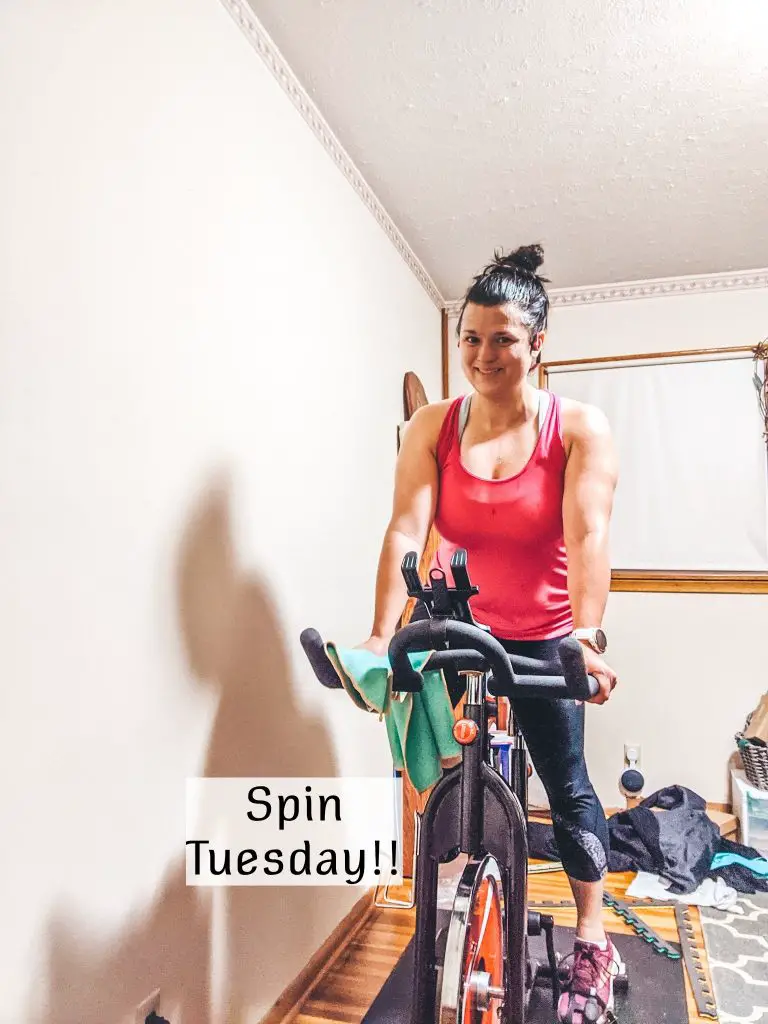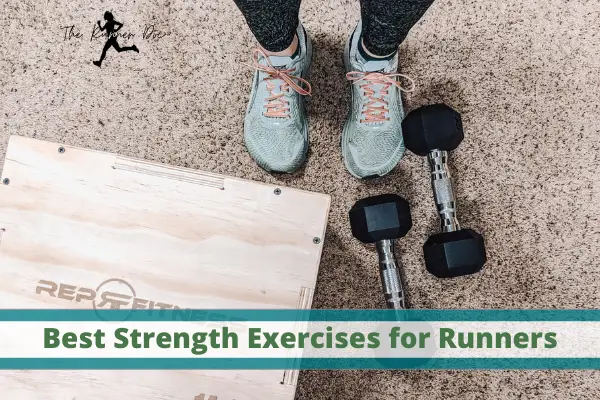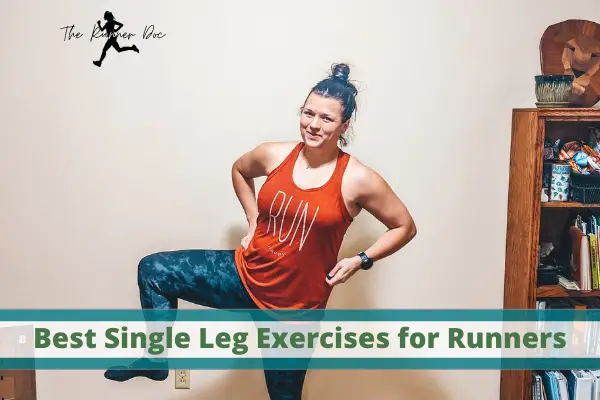How Does Cross-Training Prevent Injuries in Runners?
Cross-training for Runners: How to Prevent Injuries
Running is a great way to stay in shape, but it can also be hard on the body if not done correctly. One of the best ways to prevent running-related injuries is to cross-train or engage in multiple forms of exercise that work different parts of the body. This helps to strengthen the muscles used when running and can help prevent injuries from occurring.
I know that finding time to do more can be difficult, sometimes just finding the time to run can be a challenge. But, I promise you that adding in some cross-training is going to help you more in the end than if you just keep logging more and more miles! Not only will you become a better runner but you will also reduce your likelihood of sitting on the sidelines due to an injury!
What is cross-training and how does it help runners
Cross-training for runners is any activity that is complementary to your running training, and makes you a better runner. Cycling, swimming, rowing, and weightlifting are all great forms of cross-training, as they work muscles that you don’t use when running. This can help to prevent injuries, and also make you a stronger and faster runner.
Cross-training helps runners by making them well-rounded athletes. With cross-training, you gain more endurance, become stronger, and eliminate weak spots where injuries can develop over time.
The majority of running-related injuries are tied to overuse, when you cross-train you eliminate the overuse aspect while still improving your fitness and running performance.
What types of injuries can cross-training help prevent
Cross-training for runners can help to prevent a number of running injuries, such as iliotibial band syndrome, knee pain, and shin splints. Cycling is particularly helpful in preventing ITBS, while swimming and rowing are good forms of activity for those with knee problems.
In addition, weightlifting helps strengthen the muscles that support your joints and bones when running, which can go a long way toward preventing injury.

I recently wrote about my newfound love of rowing as a cross-training activity for running. While I do spin and lift weights regularly as well (mostly with Street Parking) I think that rowing might just be the superior form of cardio-based cross-training.
Nothing, in my opinion, will replace weight lifting and if you choose to do only one form of cross-training then weightlifting is my recommendation every time.
How to cross-train for runners
A simple way to add in some cross-training is to do bodyweight exercises on your days off. Especially if you are new to weight lifting or strength work. A simple 10-minute bodyweight workout is effective and a great starting point.
Swimming, cycling, and rowing are other great forms of cross-training for runners as they help with endurance/cardiovascular fitness as well as strengthening the muscles in a new way to make you a more well-rounded athlete.

Additionally, yoga and Pilates are also very beneficial. These are both fantastic at strengthening the core which in turn helps prevent injuries by improving posture and your base of support for running. Also, weightlifting and Pilates both incorporate resistance work which will help to improve running performance.
How to get started with cross-training
To get started with cross-training for runners, begin by setting up a schedule that includes both running and other activities. Start out slowly if you’re not used to engaging in multiple forms of exercise at once; try a spin class with a run after, or add in some weightlifting on your lighter days.
When adding cross-training to your running routine, you need to be careful not to overdo it, just like everything else.

If you are already in a regular running routine and have built up a base, I recommend starting off with two 30 minute sessions every week, gradually building up to 4 or 5 sessions of crossing-training added to your running.
Over time you’ll find the amount of cross-training that works for you and how to best balance out your running with other forms of exercise.
It’s important not to overdo it when starting out. While you might feel like doing too much is better than too little, don’t push yourself too far and try to listen to your body more than anything else.
Build your overall fitness with cross-training
When doing exercises that are complementary to running, you strengthen the areas of your body that are sometimes neglected when running. These include strengthening the muscles in your arms, core, and frontal/transverse planes which can help prevent injury while also building a strong foundation for boosting your cardiovascular fitness.
Additionally, if you choose an indoor cycling class or a rowing workout, then endurance and cardiovascular fitness for running can improve as you train your muscles to work more efficiently. These two exercises tax the body with different muscle patterns than running does which will make you become a better athlete.
Weightlifting for Runners
Weights are another way to prepare for upcoming races without overloading your joints or causing injury. Incorporate full-body weight workouts into your schedule two days per week, focusing on major muscle groups such as the hips and shoulders.

Why do I think strength training is so important? Not only does it help prevent injury, but a stronger body runs faster and more efficiently. Studies have shown that stronger legs have the ability to propel you faster and also fatigue at a slower rate.
If you’re just beginning with strength training, try to complete two sets of 12-15 reps on major muscle groups, incorporating one large weightlifting session into your running plan twice a week. As always, listen to your body and back off if you need to make adjustments due to injury or feeling too sore after weightlifting.
The next time you feel the urge to skip your weight workout in favor of a run, remember that strength training for runners is an important part of injury prevention and achieving success.
Final Thoughts on Cross-Training Benefits for Runners
Running is a fantastic way to stay in shape, but it’s important to cross-train with other exercises to prevent injuries. Weightlifting is one such activity that can help improve your running performance while also strengthening your body and preventing injury.
Start out slowly if you’re not used to engaging in multiple forms of exercise at once; try a spin class with a run after, or add in some weightlifting on your lighter days.
The most important thing is that runners realize the importance of cross-training in order to improve performance, prevent injuries, improve running form, and increase overall fitness.
Related Articles on Cross-Training for Running Injury Prevention
Best Gifts for Injured Runners in 2021
Common Types of Heel Pain When Running
The 6 Best Exercises that Runners Must Do Now!
Rowing for Runner’s Cross-Training
AFFILIATE DISCLOSURE
As an Amazon Associate, I earn from qualifying purchases. This post may contain affiliate links. If you use these links to buy something we may earn a commission. The Site may contain links to affiliate websites, and we receive an affiliate commission for any purchases made by you on the affiliate website using such links.
All information should be used as a tool for more knowledge on the subject topic, to use as references for later articles where applicable, or just to keep it in mind during future exercise routines or activities.
This article is not meant to give medical advice or to replace professional health care. Should any ailment occur please contact your doctor or physical therapist immediately to keep yourself safe and prevent further damage.
The author is not liable for any personal or commercial damage directly or indirectly related to the content hereof. You are responsible for adhering to local laws and regulations regarding health & safety, including proper use of equipment or safety gear, and compliance with governing healthcare associations, and state, and federal regulations.
The Best Way to Prevent Running Injuries with Cross-training

Dr. Abby Siler, PT, DPT is a Physical Therapist with 10 years of experience in a variety of settings. She has spent the majority of her time treating athletes in orthopedic clinics and worker’s compensation cases. She is a runner herself for the past 15 years and a lifelong athlete. Dr. Abby loves to teach runners how to stay injury free and out of her clinic.





One Comment